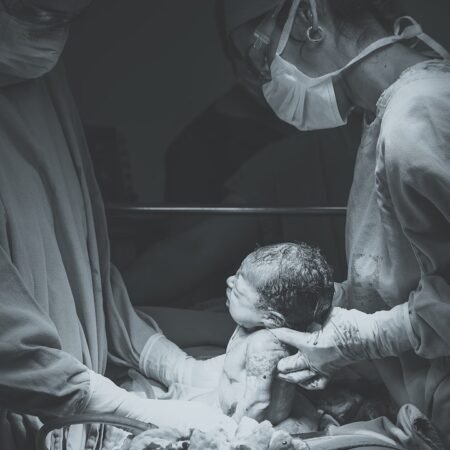When traveling with an infant or young child, many parents turn to portable travel cribs as a convenient and compact sleeping option. However, it is essential for parents to be aware that the use of travel cribs can pose potential safety risks. These hazards include health risks and the importance of correct assembly and usage, highlighting the need for parents to be informed about the potential dangers associated with using a travel crib for their child.
Key Takeaways
- Travel cribs can pose surprising risks for little ones
- Potential safety hazards include suffocation and entrapment
- Improper use of travel cribs can lead to health risks for infants
- Proper assembly and use of travel cribs is crucial for safety
- Travel crib regulations and standards help ensure product safety
Potential Safety Hazards
Travel Crib Safety Hazards
Instability and Collapse
One of the potential safety hazards of using a travel crib is the risk of the crib collapsing or tipping over. Many travel cribs are designed to be lightweight and portable, which can sometimes compromise their stability. This can pose a serious risk to a baby or toddler who is sleeping in the crib, as it could lead to injury or suffocation.
Sharp Edges and Protruding Parts
Additionally, some travel cribs may have sharp edges or protruding parts that could pose a risk of injury to a child. It’s important for parents to carefully inspect the travel crib for any potential hazards before using it for their little one.
Entrapment and Strangulation
Another potential safety hazard of using a travel crib is the risk of entrapment or strangulation. Some travel cribs may have gaps or spaces that are large enough for a baby or toddler to become trapped or entangled in. This can pose a serious risk of injury or even death. It’s important for parents to carefully follow the assembly instructions and ensure that the travel crib is set up properly to minimize the risk of entrapment or strangulation.
Health Risks Associated with Travel Cribs
In addition to the potential safety hazards, there are also health risks associated with using travel cribs for babies and toddlers. One of the health risks is the potential for mold and mildew growth in the fabric or padding of the travel crib. If the travel crib is not properly cleaned and maintained, it can create an environment for mold and mildew to thrive, which can pose a risk to a child’s respiratory health.
It’s important for parents to regularly clean and inspect the travel crib to prevent mold and mildew growth. Another health risk associated with travel cribs is the potential for exposure to harmful chemicals. Some travel cribs may be made with materials that contain toxic chemicals, such as flame retardants or formaldehyde.
These chemicals can off-gas and pose a risk to a child’s health, especially if they are exposed to them for extended periods of time. It’s important for parents to carefully research and choose a travel crib that is made with non-toxic materials to minimize the risk of chemical exposure for their little one.
The Importance of Proper Assembly and Use
Proper assembly and use of a travel crib is crucial for ensuring the safety and well-being of a baby or toddler. It’s important for parents to carefully follow the assembly instructions provided by the manufacturer and ensure that the travel crib is set up properly. This includes making sure that all parts are securely fastened and that there are no loose or broken components that could pose a risk to a child.
In addition to proper assembly, it’s also important for parents to use the travel crib as intended by the manufacturer. This means not modifying or altering the travel crib in any way, as this could compromise its safety and stability. It’s also important for parents to regularly inspect the travel crib for any signs of wear or damage, and to discontinue use if any issues are found.
Travel Crib Regulations and Standards
In order to ensure the safety of travel cribs, there are regulations and standards in place that manufacturers must adhere to. These regulations and standards are designed to minimize the potential risks associated with using a travel crib and to ensure that they meet certain safety requirements. It’s important for parents to choose a travel crib that complies with these regulations and standards to minimize the risk of injury or harm to their little one.
One of the regulations that manufacturers must adhere to is the Consumer Product Safety Commission (CPSC) standards for play yards, which includes travel cribs. These standards outline specific requirements for things like structural integrity, entrapment hazards, and labeling requirements. It’s important for parents to look for a travel crib that meets these CPSC standards to ensure its safety and quality.
Risks of Sudden Infant Death Syndrome (SIDS)
Understanding SIDS
Sudden Infant Death Syndrome (SIDS) is the sudden and unexplained death of an otherwise healthy infant. It can occur while a baby is sleeping in a crib or play yard. While there is no single cause of SIDS, there are certain factors that can increase the risk.
Risk Factors and Prevention
One of the key risk factors for SIDS is an unsafe sleep environment. When using a travel crib, it’s essential for parents to create a safe sleep environment for their baby.
Safe Sleep Practices
To minimize the risk of SIDS, parents should follow safe sleep practices recommended by organizations like the American Academy of Pediatrics (AAP). This includes placing the baby on their back to sleep, using a firm mattress with a fitted sheet, and avoiding soft bedding or toys in the crib. By following these safe sleep practices, parents can help reduce the risk of SIDS when using a travel crib.
Travel Crib Alternatives and Recommendations
For parents who are concerned about the potential risks of using a travel crib, there are alternative sleeping solutions that they can consider when traveling with their little one. One alternative is a portable bassinet, which is designed specifically for newborns and young infants. Portable bassinets are often smaller and more lightweight than traditional cribs, making them a convenient option for traveling.
Another alternative is a portable play yard with a bassinet attachment, which can provide a safe and comfortable sleeping space for babies and toddlers while on the go. These play yards often have mesh sides for breathability and visibility, as well as a removable bassinet that can be used for infants.
Tips for Safe Traveling with Infants and Toddlers
In addition to choosing safe sleeping solutions like portable bassinets or play yards, there are also other tips that parents can follow to ensure safe traveling with their infants and toddlers. One tip is to always use a properly installed car seat when traveling by car, as this can help minimize the risk of injury in the event of an accident. Another tip is to pack essential items like diapers, wipes, and extra clothing in a diaper bag so that they are easily accessible during travel.
It’s also important for parents to plan ahead and research child-friendly accommodations and activities at their destination to ensure a smooth and enjoyable trip for the whole family. In conclusion, while travel cribs can be a convenient sleeping solution for babies and toddlers when traveling, it’s important for parents to be aware of the potential risks associated with using them. From safety hazards to health risks, it’s crucial for parents to carefully consider the safety and well-being of their little one when using a travel crib.
By following proper assembly and use guidelines, choosing a travel crib that meets regulations and standards, and considering alternative sleeping solutions, parents can help minimize the risks and ensure safe traveling with their infants and toddlers.
FAQs
What are the risks of using a travel crib for my baby?
Using a travel crib for your baby can pose risks such as suffocation, entrapment, and falls if not used properly or if the crib is not in good condition.
How can I minimize the risks of using a travel crib for my baby?
To minimize the risks of using a travel crib for your baby, make sure to follow the manufacturer’s instructions for assembly and use, regularly inspect the crib for any damages, and avoid adding extra padding or soft bedding that could increase the risk of suffocation.
Are there any safety standards for travel cribs?
Yes, there are safety standards for travel cribs set by organizations such as the Consumer Product Safety Commission (CPSC) in the United States and the European Committee for Standardization (CEN) in Europe. It is important to look for travel cribs that meet these safety standards.
At what age can a baby safely use a travel crib?
Babies can safely use a travel crib once they have outgrown the risk of suffocation and entrapment, typically around 3-4 months of age. It is important to follow the manufacturer’s guidelines for the specific travel crib being used.
Can I use a second-hand travel crib for my baby?
It is not recommended to use a second-hand travel crib for your baby unless you are certain that it meets current safety standards and has not been damaged. It is important to inspect the crib thoroughly and ensure that all parts are in good condition before use.




























